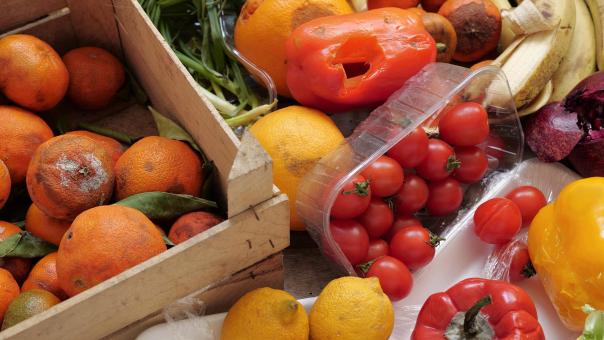
Guys and St Thomas’ NHS Foundation Trust is made up of five hospitals and multiple community sites. In both Guy’s and St Thomas’ hospitals they have 1,200 patient beds and food made on site within the cook-chill production kitchen provides breakfast, lunch and dinner meals.
Following on from one of the many important stakeholder meetings I attend that is dedicated to improving sustainability across the Trust, there was a steady growing interest in the amount of food waste generated across the sites. Having already taken a proactive approach to exploring what our actual food waste levels were, I engaged with the contract supplier responsible for waste.
It was August 2022 when I sat back in the chair in astonishment at what I was viewing, the figures stated that across site we were generating 17.5 tons of food waste a month.
I put a task and finish group together that consisted of all stakeholders involved with food preparation, food service and food waste recording and collection (patient and private patient feeding, in-house and commercial retail, hospitality, waste management, production kitchen and catering stores).
As chair of the task and finish group, I set a sustainability pledge that we would get food waste down to less than ten tons by 2025. We set out to get a clear picture of what was contributing to the mass of food waste and it became apparent quite quickly that the controlling of food waste needed more oversight.
Meetings were bi-weekly at first and then when we started making good progress they became monthly. Utilising the waste management reports we were able to break down all the areas within the Trust that were contributing to food waste and target the worst contributors.
By analysing each area, we made some quick wins, examples such as retraining the patient food service assistants on the correct process of utilising the biodegradable food bags and food waste bins, reducing the patient feeding pack sizes, reviewing menu standing orders, weighing food waste, reducing retail and hospitality numbers and reviewing nursery food requirements.
One simple way of reducing the food waste was at breakfast. The amount of pre-made porridge and pre-cooked toast was huge, but by re-training, looking at different methods of making porridge and cooking toast in batches we achieved some great results.
Reducing the amount of hot food on the counters towards the end of service times within the in-house retail outlets whilst still providing a condensed offer also made an easy way to reduce food waste.
The outcome from the task and finish group has been very successful and food waste levels have been reduced form 17.5 tons to 11 tons.
Additional support came from the clinical and nutritional leads, they were able to engage with the wards that were contributing the highest amount of food waste and arrange meetings with myself to discuss ways of changing the current food offer without affecting the patient’s nutritional intake.
My procurement partner, Pelican, also assisted with the food waste reduction. Pelican’s food waste app was easily downloaded onto the tablets used by the patient feeding food service assistants, at the end of every meal service the food service assistant weighs the food waste and records it on the app.
From there I am able to assess the amount of food waste generated from each meal service and act upon these findings.
Some of the challenges I faced in reducing the food waste were changing the existing habits of how food waste was dealt with and getting people to focus on the importance of reducing food waste.
Poor communication from certain wards meant we were providing meals to wards that regularly required special diets or had nil-by-mouth patients.
Once I had achieved some considerable food waste reductions I was able to share with the relevant senior stakeholder groups the findings the current outcome position, and what that meant to the Trust financially and how it impacted upon the sustainability pledge.
As a result the focus on reducing food waste has become a key topic on many agendas and the support streams have grown across the Trust. This all ties in well with the Trust’s focus on improving the Net Zero challenge and promoting sustainability. There is work in progress to measure the amount of CO2 emissions generated through my food production processes. We are currently looking at reviewing all menu items and replacing those that yield high emission values.
So what are the next steps you may ask? I still have a lot of work to do to reduce the food waste levels to meet my 2025 pledge of less than ten tons. However, this amount is still a significant figure and I need to reduce this by at least half again.
My aim to achieve this amount can be achieved by moving my food production service from a cook-chill operation to a cook-freeze operation.
By moving to a cook-freeze operation the amount of food waste will be notably reduced by providing smaller pack sizes and being able to pick the amount of food against the amount ordered for each ward.
The shelf life of each menu item will be significantly extended from four days to two months and there will always be the availability for patients to get their first choice. We will also be able to break down the food waste at ward level into trolley waste and plate waste so we can look at trends and review how best to reduce food waste further.
It’s not an easy task but it’s not impossible, with the right leadership, the right amount of stakeholders engaged in the project and the additional support that is available.